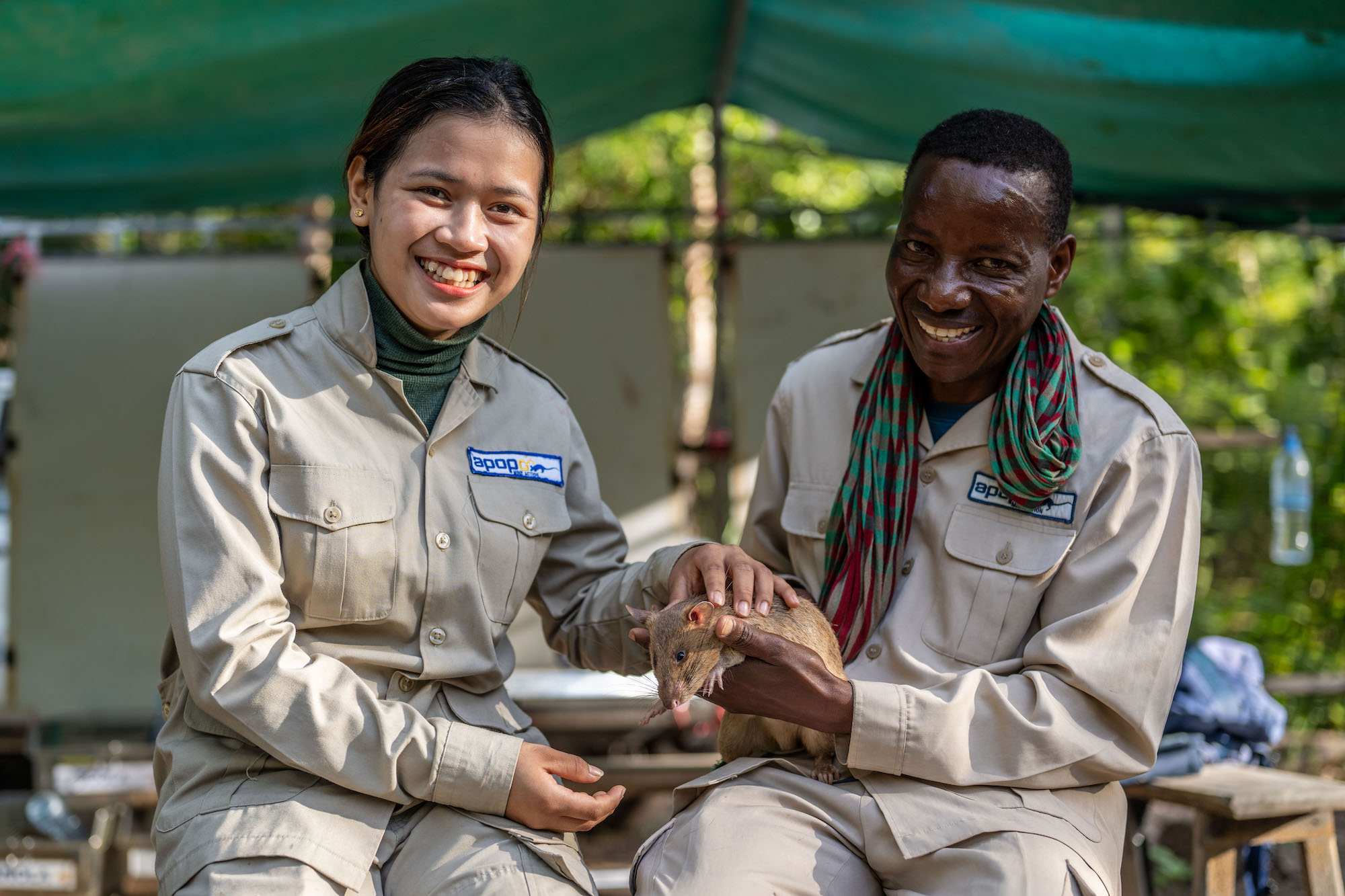A Tailored Response for Safer Communities
Landmines and unexploded ordnance (UXO) continue to pose severe humanitarian and economic challenges worldwide. According to the Mine Action Review in 2023 there were 5,241 recorded casualties from landmines and explosive remnants of war, including 1,431 deaths. The majority of victims were civilians, with children making up almost half of those casualties.
As of the latest available data, 60 countries and other areas are contaminated by antipersonnel landmines. This widespread contamination poses significant risks to civilians, impedes economic development, and hampers post-conflict recovery efforts. Contaminated land displaces families, limits agriculture, and obstructs infrastructure development, perpetuating cycles of poverty and fear.
As we observe International Landmine Awareness Day on April 4th, we highlight APOPO’s unique, multi-method approach to mine action — a strategy designed to be adaptable, efficient, and cost-effective across diverse environments.
See our Glossary of Key Terms to better understand the language used in this article
A Comprehensive Strategy: Integrating Multiple Methods
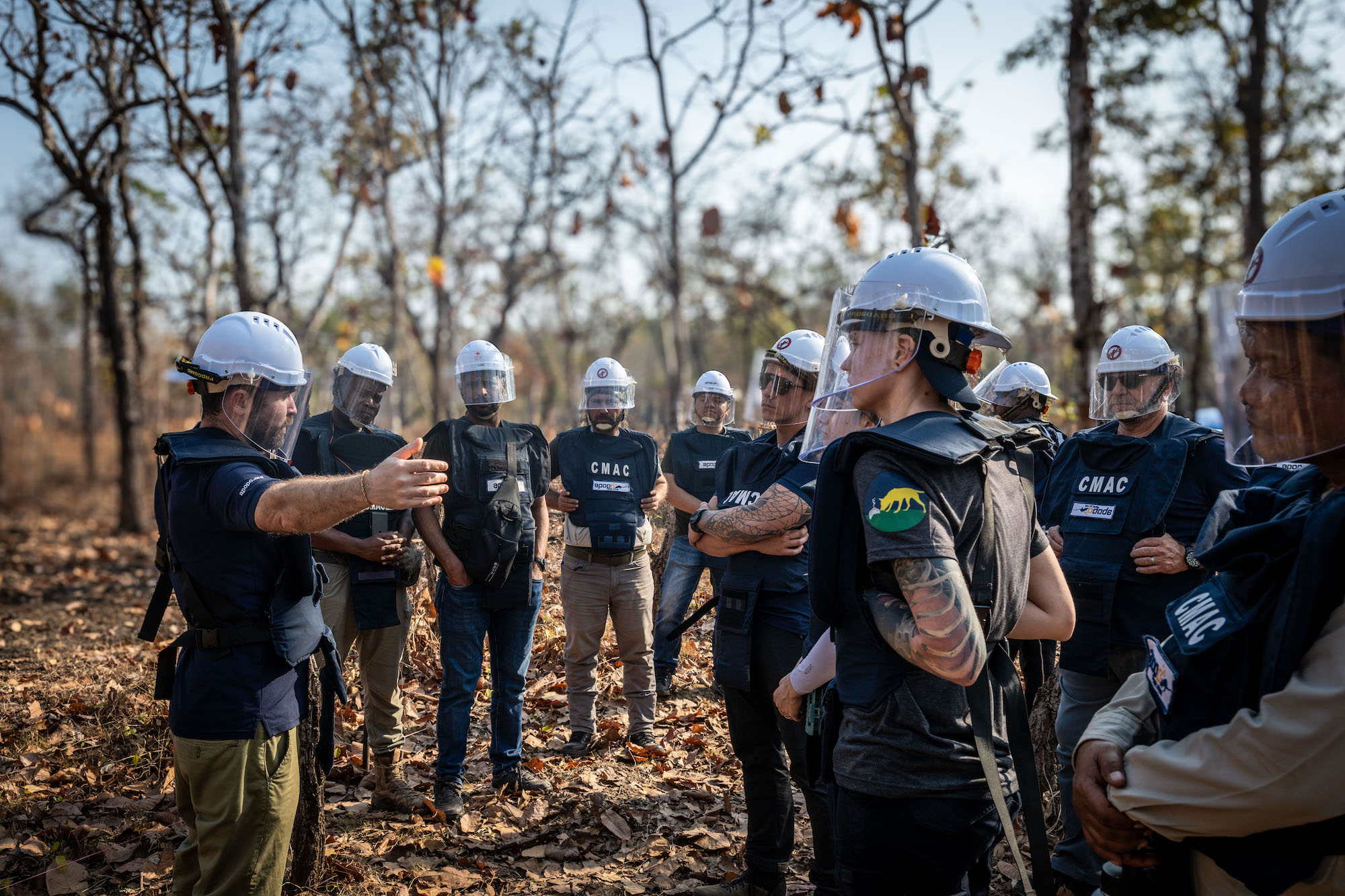
APOPO recognizes that a one-size-fits-all approach is not viable due to the varied conditions, geography, and local needs of mine-affected areas. Some regions have dense vegetation that requires mechanical clearance intervention, while others can be surveyed by technical survey dogs that can overcome the vegetation and reduce environmental impact. Others have loose, dry soil, where mine detection rats (MDR) may be a more efficient approach to mine detection. Certain areas require highly trained manual deminers, while others can be cleared more rapidly with the assistance of mine detection dogs (MDDs). By employing a combination of these methods, APOPO ensures each minefield is cleared in the most effective and cost-efficient manner. Each clearance method interacts with and supports the others, creating a comprehensive and highly effective demining strategy. From initial assessments to the final removal of explosive hazards, every tool and technique plays a crucial role in expediting clearance, enhancing safety, and reducing costs.
Non-Technical Surveys (NTS): Laying the Groundwork
Before any clearance begins, APOPO conducts a non-technical survey (NTS). This initial step involves gathering intelligence from local communities, historical records, military reports, and satellite imagery to establish a broad understanding of where landmines and UXO are suspected to be present. Non-technical surveys are vital for gathering preliminary information, but cannot confirm contamination. Their role is to produce a generalized map of suspected hazardous areas (SHAs), which then requires further investigation to confirm the actual presence of landmines.
Technical Surveys and the Role of Technical Survey Dogs (TSDs)
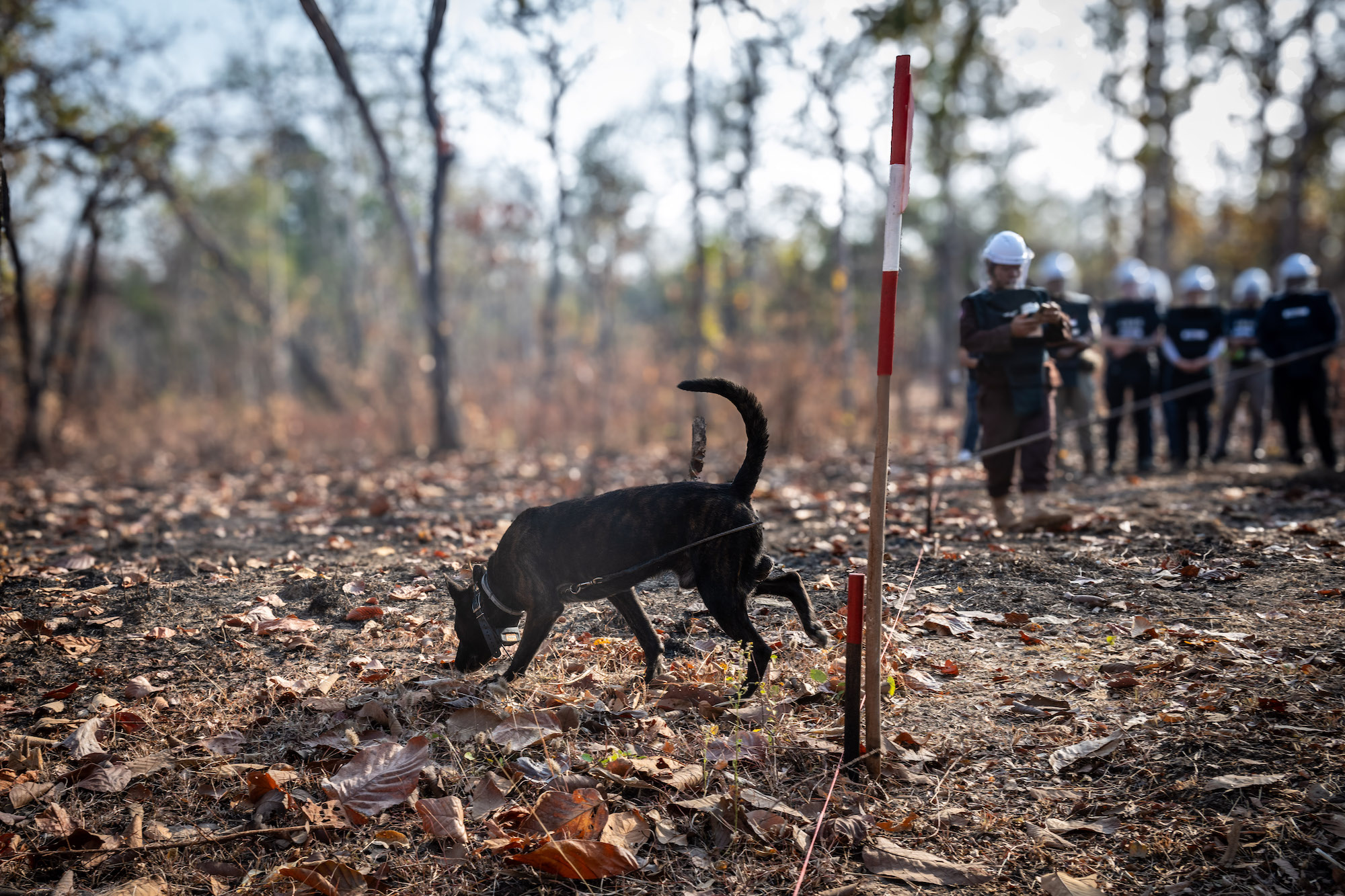
In many situations, the non-technical survey is followed by a technical survey to clarify which areas truly require clearance. Technical survey dogs (TSDs) can be deployed to detect areas where explosives are present and designate them for clearance. At the same time, areas where no evidence was found can be reduced, saving precious time and resources. Unlike mine detection dogs (MDDs) or mine detection rats (MDRs), which are used to locate all explosive items within a specific perimeter, TSDs are used to identify the edges of the contaminated perimeter, allowing for the reduction of the rest. This allows APOPO and its partners to identify priority areas and focus resources where they are most needed.
TSDs are particularly effective tools for narrowing down areas that require full clearance. By rapidly identifying contaminated zones, TSDs prevent costly and time-consuming clearance of land that may not contain any mines at all. This approach allows APOPO to avoid the unnecessary deployment of manual deminers, MDDs, or MDRs over large areas, dramatically reducing overall costs and expediting the safe release of land back to local communities.
While TSDs are extremely useful in appropriate environments, they are not used everywhere. For example, in Angola, dogs are not deployed at all. Instead, APOPO relies on manual deminers, machines, and mine detection rats, which are better suited to Angola’s specific conditions. In Ukraine, where the scale of suspected contamination is vast, TSDs are essential in rapidly assessing large areas to release safe land more efficiently. In Cambodia, TSDs help identify areas requiring clearance, ensuring that time and resources are not wasted on land that is actually free of mines.
Mine Detection Dogs (MDDs): Precision in Detection
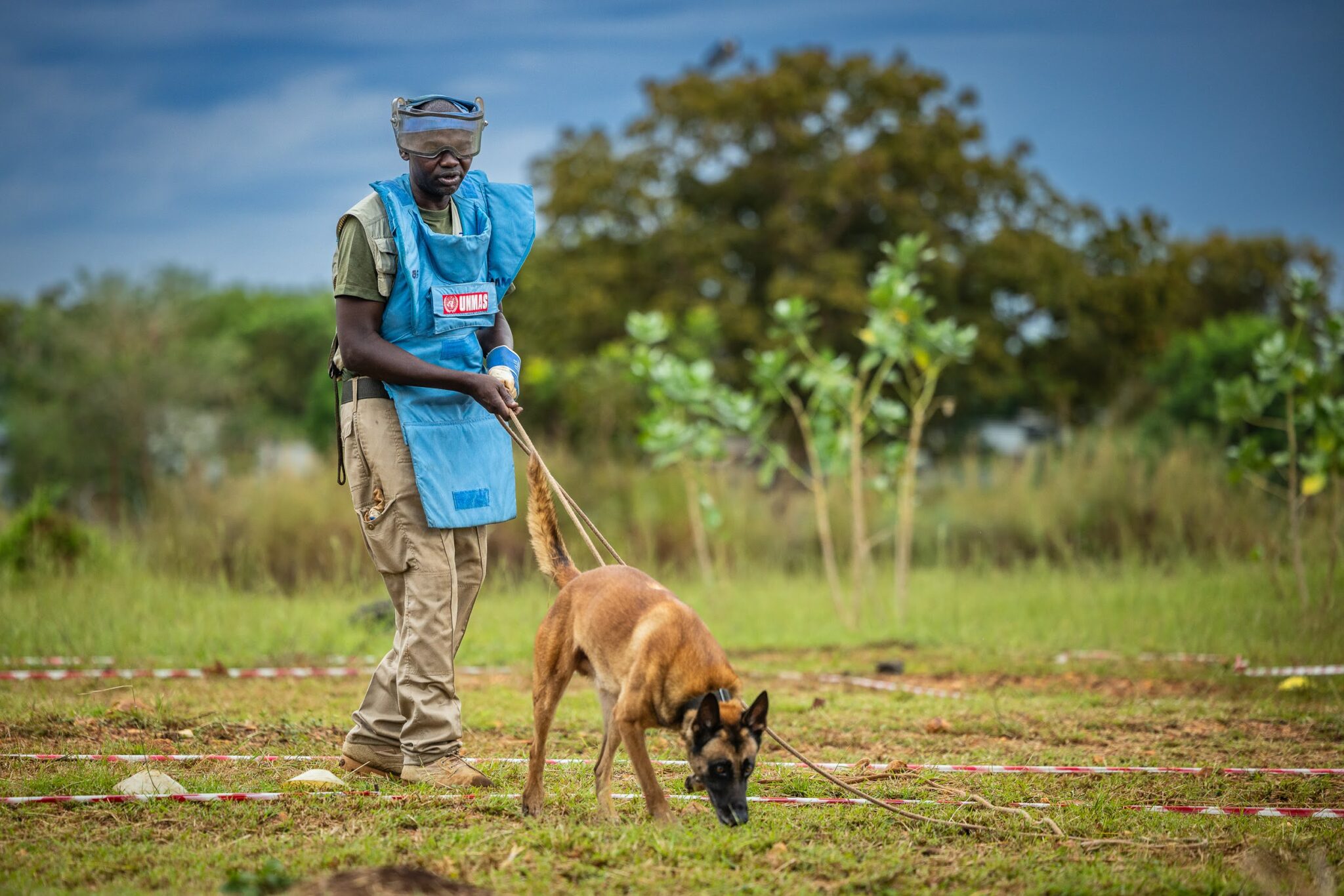
Mine detection dogs (MDDs) are trained to locate the scent of explosives in buried landmines, allowing deminers to pinpoint the exact location of each device. MDDs are particularly effective in large, open areas where mines are sparsely scattered, areas with a high concentration of metal, or areas with minimal metal landmines, which pose a challenge for metal detectors. The MDDs work well alongside manual deminers, enhancing accuracy and efficiency while ensuring no mines are left behind.
However, MDDs have limitations. They may not perform optimally in extreme weather conditions or in areas with dense vegetation that hinders their movement and scent detection capabilities. Additionally, the training and upkeep of MDDs can be resource-intensive.
Mine Detection Rats (MDRs): Cost-Effective and Efficient

APOPO’s mine detection rats (MDRs) offer a highly cost-effective alternative to MDDs, particularly in regions where terrain conditions allow for their deployment. They are light enough to walk over mines without triggering them and can quickly cover large areas, making them ideal for environments with loose, dry soil where metal detectors often struggle. MDRs can detect the smallest amounts of TNT in deeply buried objects, which are more difficult to detect using conventional methods.
However, MDRs also have some limitations. They require vegetation clearance before deployment, as they rely on handlers maintaining line-of-sight contact. This requires mechanical clearing of vegetation before MDRs can begin work, unlike MDDs, which can operate in a wider range of environments without prior vegetation removal. Additionally, MDRs do not function well in cold climates, which imposes limitations to operate in some countries.
MDRs are currently deployed in Angola, Cambodia, and Azerbaijan, where they are used to clear large tracts of farmland and pathways in rural communities. By working in conjunction with other demining methods, MDRs contribute to a highly efficient and cost-effective demining process. They are less expensive to train and maintain than MDDs and generally happy to work with any trained rat handler, making them a practical option for a range of long-term demining programs.
Manual Deminers: The Backbone of Mine Clearance
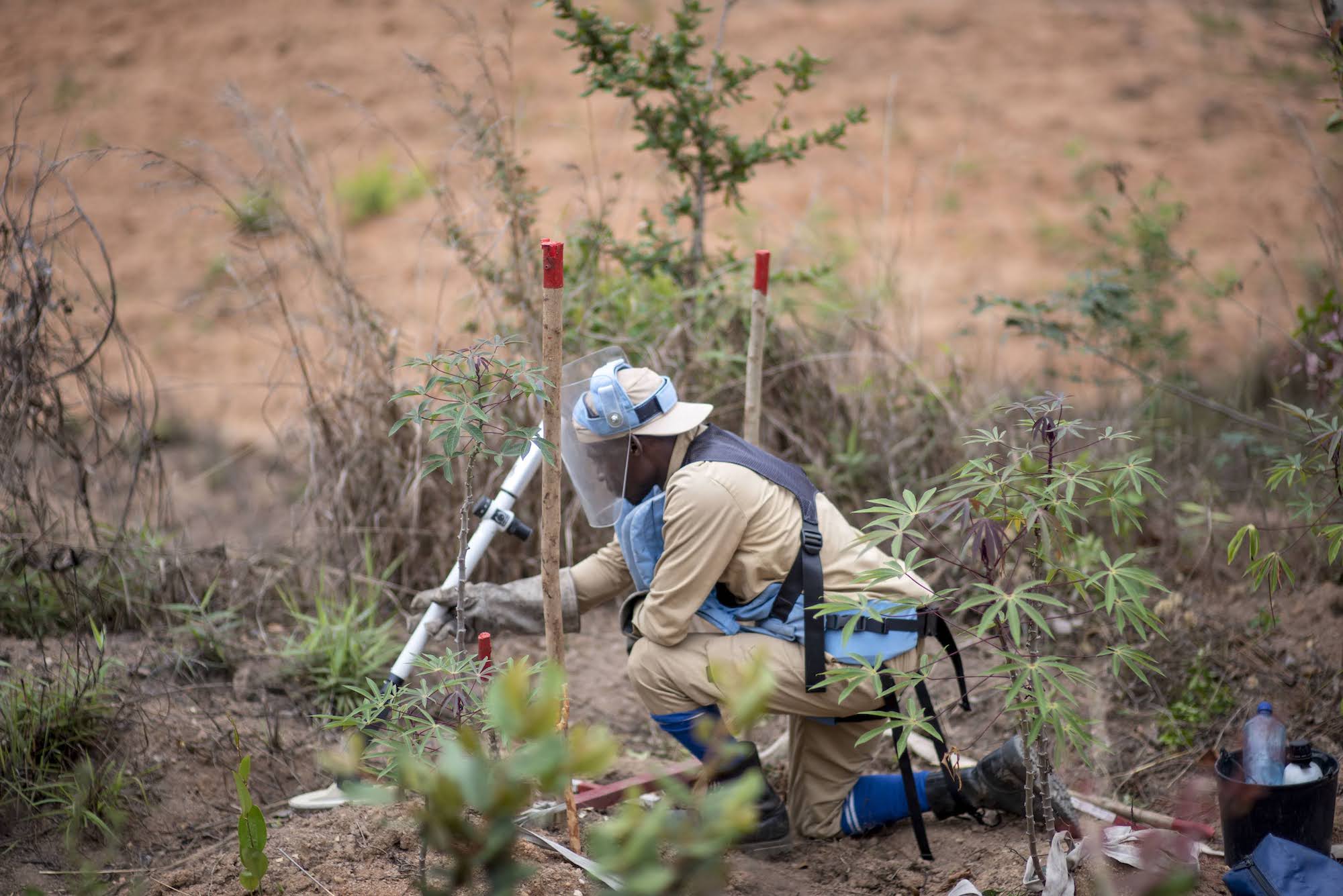
Even when TSDs, MDDs, and MDRs have identified contaminated areas, manual deminers remain a critical element of APOPO’s integrated approach to mine action. Using metal detectors and careful excavation techniques, highly trained deminers are responsible for the precise detection and safe removal of landmines, especially in areas with high mine density, complex terrain, or where mines are buried too deeply for animals to detect.
Manual deminers are particularly important in areas where the use of animals or machines is impractical or inefficient. While dogs and rats can quickly cover large areas and detect landmines, their effectiveness is reduced in certain conditions. For example, MDRs require vegetation clearance before they can be deployed, and MDDs can struggle in environments with dense foliage or poor weather conditions. In these cases, manual deminers provide the thorough, careful clearance needed to ensure safety.
APOPO employs highly trained local deminers in all its programs. In Angola, manual deminers work alongside MDRs and mechanical equipment to clear farmland contaminated by decades of conflict. In Cambodia, manual deminers are deployed to clear heavily vegetated areas and prepare land for agricultural and community use. In Azerbaijan, manual deminers play a crucial role in restoring contaminated areas for resettlement and agricultural use. Their work is essential for ensuring that areas identified by technical surveys are completely cleared of mines and safe for civilian use.
Mechanical Clearance: Preparing the Land for Safety
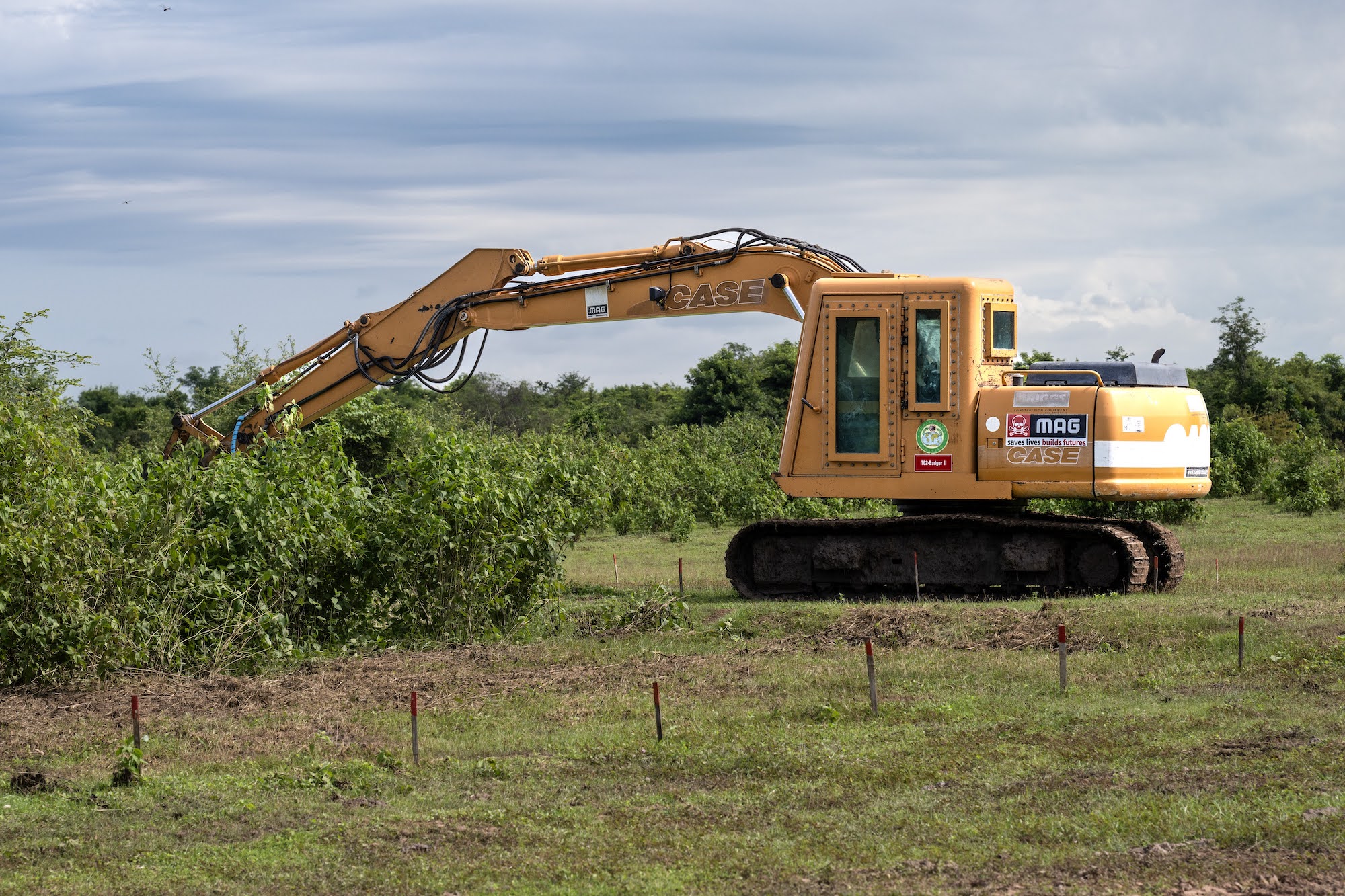
Mechanical clearance tools, such as flails, tillers, mulchers, and brush cutters, are critical to APOPO’s integrated approach. These machines are used to remove thick vegetation and prepare areas for further searches by MDRs, MDDs, and manual deminers.
Mechanical tools can remove obstacles, cover large areas quickly, and reduce risk, but they are not suitable for all environments. They are most effective in open areas with thick vegetation but are less efficient in urban or rocky terrain. Additionally, while they can assist with the preparation of contaminated land, they do not detect mines themselves. Their use must be complemented by other detection methods to ensure complete coverage.
Risk Education: Preventing Future Accidents
One of the most effective ways to protect communities from landmines is through Explosive Ordnance Risk Education (EORE). APOPO aims to integrate EORE into all its programs to ensure that communities, especially children, understand the dangers of landmines and how to avoid them.
Risk education is a crucial component of APOPO’s work in Cambodia and Angola, where the risk of encountering mines is high for individuals engaging in everyday activities, such as farming, collecting firewood, or traveling. APOPO provides educational sessions to help local communities identify dangerous areas, recognize warning signs, and report suspected contamination to authorities.
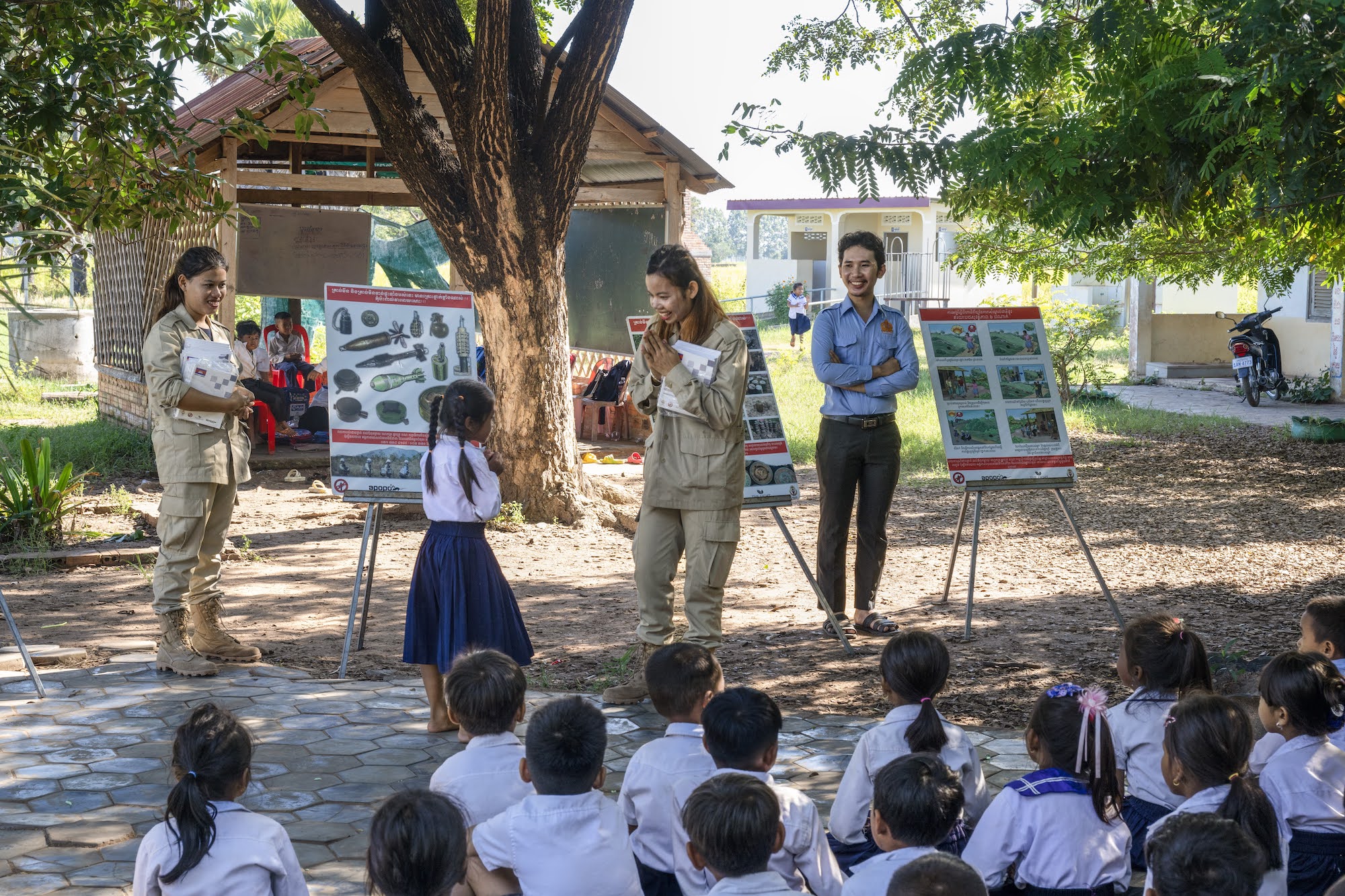
While EORE is a key objective for APOPO, its implementation is often limited by funding availability. Not all countries where APOPO operates have the resources to deliver comprehensive risk education programs. However, efforts continue to expand this critical service wherever possible.
Victim Assistance: Helping Survivors Rebuild Their Lives
Landmine accidents leave survivors with physical, psychological, and economic challenges that can last a lifetime. APOPO supports victim assistance programs in Cambodia in partnership with Humanity and Inclusion, where landmine survivors are brought from the most remote areas into the rehabilitation centers, where they receive medical treatment, physiotherapy, psychological support, and vocational training to help them regain their independence.

These programs are designed to ensure that survivors are not forgotten. By helping them regain access to economic opportunities and providing essential services, APOPO is working to build stronger, more resilient communities. The organization collaborates with local agencies and international partners to ensure that those affected by landmines receive the care and support they need.
The Value of an Integrated Approach to Mine Action
APOPO’s strength lies in its ability to combine various demining methods to create a customized approach for each minefield. By using non-technical surveys and technical survey dogs to narrow down areas of concern, APOPO ensures that resources are directed where they are most needed. Mine detection rats, manual deminers, and MDDs work together to safely and effectively clear contaminated land. Mechanical clearance assists in preparing land for further detection and clearance operations.
This integrated approach ensures that APOPO can operate efficiently across different environments. By deploying the right tools for the right conditions, APOPO makes mine clearance faster, safer, and more cost-effective. It also ensures that cleared land is restored to communities quickly, allowing people to rebuild their lives and regain access to critical resources.
Join the Fight for a Landmine-Free World
Despite significant progress, the global threat of landmines remains a humanitarian crisis. As highlighted by the Landmine Monitor 2024, the number of casualties is increasing, and millions of people continue to live under the shadow of explosive hazards. APOPO’s integrated approach is making a difference, but there is much more to be done.
This International Landmine Awareness Day, we invite you to support APOPO’s work by donating, advocating, or simply sharing our mission. Together, we can create a future where landmines are no longer a threat to communities worldwide. Join us in making the world a safer place.
Support APOPO’s Demining Work Today
Glossary of Key Terms
To better understand APOPO’s comprehensive approach to mine action, here are some essential terms:
- Antipersonnel Landmines: Explosive devices designed to be triggered by an individual’s presence, causing injury or death to civilians and combatants alike.
- Explosive Remnants of War (ERW): Dangerous explosives left behind after armed conflict, including unexploded bombs, landmines, and other ordnance that pose ongoing risks to civilian populations.
- Mine Action Review: An independent research project evaluating global mine action efforts, including landmine and cluster munition contamination, clearance, and risk education. It promotes transparency, accountability, and progress under international treaties.
- Mine Action: The range of activities aimed at addressing the dangers posed by landmines and ERW, including survey, clearance, risk education, victim assistance, advocacy, and stockpile destruction.
- Non-Technical Survey (NTS): The initial phase of mine action involving data collection from local communities, historical records, and imagery to identify and map suspected hazardous areas (SHAs).
- Technical Survey: A follow-up survey that uses trained animals, equipment, and manual methods to define the boundaries of contaminated areas and identify areas that require full clearance.
- Technical Survey Dogs (TSDs): Specially trained dogs used to detect explosives in areas to determine whether full clearance is required, improving efficiency by narrowing down contaminated areas.
- Mine Detection Dogs (MDDs): Specially trained dogs capable of detecting the scent of explosives within buried landmines, effectively pinpointing their precise locations for safe removal.
- Mine Detection Rats (MDRs): African Pouched Rats trained to detect the presence of TNT in buried landmines. They are lightweight, cost-effective, and capable of covering large areas quickly without triggering explosives.
- Manual Deminers: Human deminers equipped with metal detectors and excavation tools who carefully locate, uncover, and safely remove landmines from contaminated areas.
- Mechanical Clearance: The use of heavy machinery such as flails, tillers, and brush cutters to clear dense vegetation, remove obstacles, reduce the risk and prepare the land for further detection and clearance efforts.
- Explosive Ordnance Risk Education (EORE): Educational programs designed to inform at-risk communities, especially children, about the dangers of landmines and how to avoid them.
- Victim Assistance: Support services provided to landmine survivors, including medical treatment, psychological counseling, rehabilitation, and vocational training to help rebuild their lives.
- Suspected Hazardous Area (SHA): Areas identified during non-technical surveys where landmines or ERW may be present, requiring further investigation or clearance.
- Clearance: The process of physically removing or destroying landmines and other explosives to ensure land is safe for civilian use.
- Post-Conflict Recovery: Efforts aimed at rebuilding communities and restoring livelihoods after armed conflict, including mine action to ensure safe access to land and resources.
- Cost-Effective Demining: Strategies designed to minimize costs associated with mine clearance, often through the use of trained animals and targeted survey techniques.
- Integrated Approach: A comprehensive demining strategy that combines various detection methods (e.g., TSDs, MDDs, MDRs, manual deminers, and mechanical assets) to optimize efficiency and safety.
- International Landmine Awareness Day: An annual observance on April 4th aimed at raising awareness about landmines and promoting efforts toward achieving a mine-free world.

